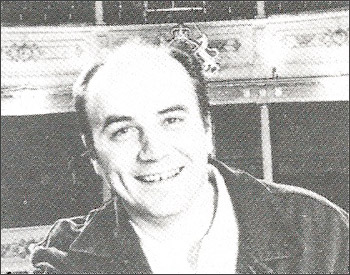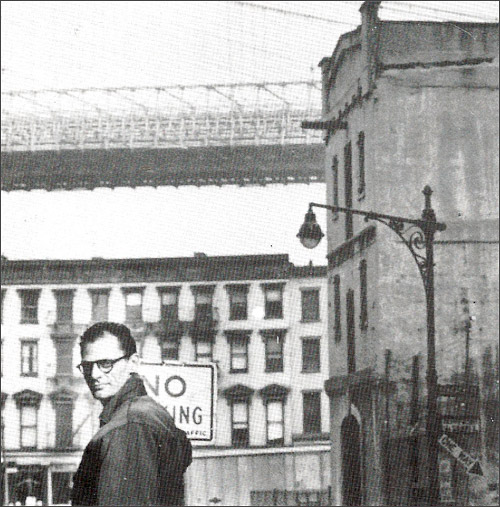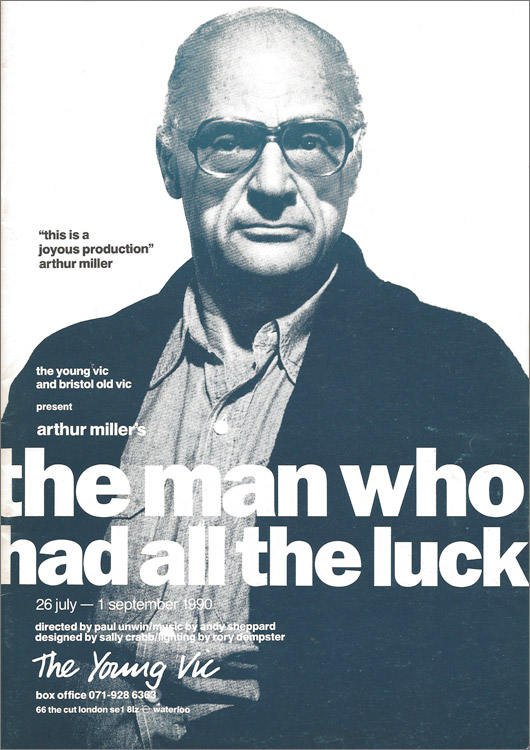A Meeting with Mr. Miller
I first met Arthur Miller in the coffee shop of the hotel he was staying at on his way back from Turkey. It was 1985 and he’d been part of a writers’ delegation protesting about Turkish suppression of human rights.

I had recently got his permission to direct the British premiere of The Archbishop’s Ceiling at the Bristol Old Vic where I was associate director. To be honest, I was so awe-stricken that conversation took time to settle. Miller, of course, was relaxed, forthright and remarkably easy and The Archbishop’s Ceiling was at the front of his mind. In Turkey, writers were being tortured for their attitudes to the state; in Czechoslovakia they were silent, with Vaclav Havel living in rural exile. Gorbachev was unheard of. The Archbishop’s Ceiling, which is about the psychological distortion created by state oppression, seemed set to stand as an epitaph to literary freedom. I directed the play, getting to know Miller better through several phone calls, and felt satisfied that the play had re-entered the Miller repertoire.
More recently, I took a photocopy of a gallery proof of The Man Who Had All The Luck away for the weekend along with a dozen new plays by young writers. The play leapt out at me. It seemed to be bold, almost bloody minded, in its dramatic drive and, unlike any other new play I’ve read before or since, demanded moral attention from its audience.
I phoned Miller’s agent and, with remarkable ease, got the rights to do the play. I gently picked up the threads of the vague friendship that had been established over The Archbishop’s Ceiling. Miller was immediately generous and seemed eager to engage with me, the production and the play. I arranged to go to the States last November and visited him in Connecticut.
He works in a little shack up the hill from his house and we spent the afternoon chatting there. The shack is spartan: a stove, linoleum – literally worn thin from pacing – a big desk and a scruffy day bed. He has a huge, old IBM word processor. Patting it affectionately, he said, “Learning how to use this stopped me writing plays for ten years!” As he sat me on one wobbly swivel chair and swung his feet onto the desk, he said, “Well, this is where it all happens — what do you think?” I asked him whether he was writing at the moment. He was trying to finish a play and had been through thirty different endings but was still unsatisfied. Things, he said, get more complicated as you grow older – you can see a greater variety of options.
Inge Morath, Miller’s wife, had just returned from Berlin – where she was born and had survived the devastation at the end of the war – having photographed the Wall coming down. What, I asked Miller, did he think was happening in Europe and was he amazed by the speed with which things had changed since The Archbishop’s Ceiling?
Miller is certainly world-wise and possibly world-weary but his historical perspective is unique. Things were chaining very fast, he recognised. There were dangers implicit in that change – more recently he has written about the threat of a unified Germany – but there was also hope. Specifically, he talked about the change that a unified Europe would have on the American psyche. America could no longer be the industrial, political and, by extension, moral world leader if confronted by a Europe that stretched from the Atlantic to the Urals.
I’d come to talk about his very early play, The Man Who Had All The Luck, that hadn’t been given a major production since its disastrous premiere in 1944. The play is funny and moving but is a young man’s play. I wanted to find out what its 74-year-old writer felt about it more that 45 years on.

At one point, he said, “The thing you’ve got to understand about my plays is that the background is the American dream and the foreground the American nightmare.”
Miller came to Bristol in May to see our production of The Man Who Had All The Luck. We had communicated quite extensively by fax and after the meeting in Connecticut, I had become more relaxed with him.
Sitting behind Miller during a performance of his play was, inevitably, nerve wracking. But he sat alert and focussed and he laughed loudly. It was thrilling and after the performance, I felt honoured to have been able to show Miller that the writer he was in 1940 could stand in line with the man who wrote Death of a Salesman, All My Sons and The Crucible.
The next day, we had breakfast together before he did an impromptu talk to our schools audience. He’d enjoyed the evening. He was incisive and clear about elements that had not been right and seemed thrilled that the play worked with the audience as easily as it did.
He said later to the school students, “The theatre of the 30s and 40s was completely realistic in the most rudimentary sense of that word. This play – with its mixture of a real theme about real people but presenting them in a mythical kind of way – was so different that nobody understood what it was all about. They couldn’t dig it as a play. They thought it was too strange and this was especially so to the critics who were trying to stack it up as a realistic work. The director confessed he didn’t know how to approach it and didn’t succeed in finding a style for it. I think a fascinating thing about your production is that it manages to set the keys so the audience feel they’re not sitting in front of a conventional play right from the outset.
“Consequently they can relax and understand why it’s so – it’s a question of style. It’s a very good example, I think, of the changes in the nature of direction and the style of acting. It’s all done very graphically, very clearly, unlike the realistic theatre where verisimilitude is the main object, where everything has to seem exactly as it does in life. We’re aware very soon that there is some extra dimension here which isn’t realism.”
Arthur and Inge came to see the production later in the run. By then it had settled and performers were calmer. After the matinée, the cast and friends had a joyful tea party. It seemed a long way from that first cup of coffee.
(A version of this piece originally appeared in a programme note published in 1990 for the Young Vic production of THE MAN WHO HAD ALL THE LUCK.)


